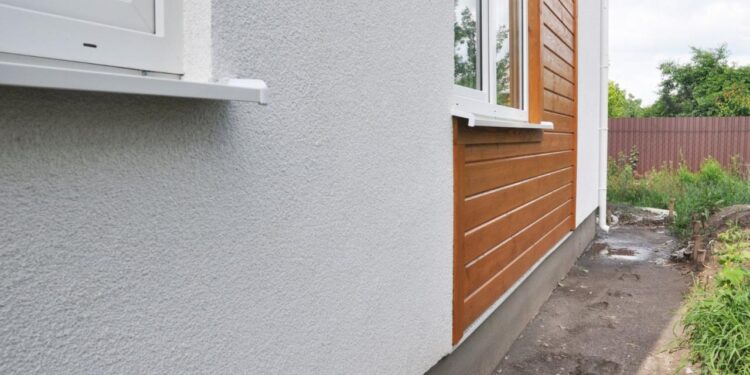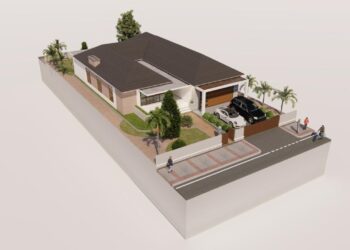As Siding vs Stucco: Which Exterior is Right for You? takes center stage, this opening passage beckons readers into a world crafted with good knowledge, ensuring a reading experience that is both absorbing and distinctly original.
The topic delves into the comparison of siding and stucco as exterior options for homes, shedding light on their history, characteristics, and practical considerations.


Introduction
Siding and stucco are two popular options for the exterior of homes, each offering unique benefits and aesthetic appeal. Siding refers to the material used to cover the exterior of a building, such as vinyl, wood, or fiber cement. On the other hand, stucco is a plaster-like material made from cement, sand, and water, applied in layers to create a durable and textured finish. Both siding and stucco have been used in construction for centuries, with siding dating back to ancient civilizations like the Greeks and Romans. Stucco, on the other hand, has roots in Mediterranean and Spanish architecture. It's essential to choose the right exterior for your home, as it not only enhances curb appeal but also provides protection against the elements and contributes to energy efficiency.Siding Overview
When it comes to exterior materials for your home, siding is a popular choice due to its versatility and durability. There are several types of siding materials available, each with its own unique characteristics.Types of Siding Materials
- Vinyl: Vinyl siding is a popular option due to its affordability and low maintenance requirements. It comes in a variety of colors and styles, making it easy to customize the look of your home.
- Wood: Wood siding provides a classic and natural look to your home. While it requires more maintenance than vinyl, it can be easily painted or stained to match your aesthetic preferences.
- Fiber Cement: Fiber cement siding is a durable option that resists rot, fire, and insects. It is low maintenance and can mimic the look of wood or stucco.
Durability and Maintenance
When considering siding options, it's important to think about the durability and maintenance requirements of each material. Vinyl siding is known for its low maintenance, while wood siding may require more upkeep to prevent rot and decay over time. Fiber cement siding is highly durable and requires minimal maintenance, making it a popular choice for many homeowners.Cost Comparison
The cost of siding can vary depending on the material and quality. Vinyl siding tends to be the most affordable option, while wood siding can be more expensive due to the cost of materials and maintenance. Fiber cement siding falls somewhere in between, offering a balance of durability and cost-effectiveness.Stucco Overview
Stucco is a popular exterior finish known for its durability and timeless aesthetic appeal. It is a mixture of cement, sand, lime, and water that is applied in multiple coats to create a seamless, textured surface on the exterior walls of a building. Let's delve into the characteristics, benefits, application process, and longevity of stucco as an exterior finish.Characteristics of Stucco
Stucco is a versatile material that can be customized to achieve different textures and colors, making it suitable for various architectural styles. It is fire-resistant, impact-resistant, and can withstand harsh weather conditions, making it a durable option for exterior finishes. Additionally, stucco is low-maintenance and does not require frequent painting or repairs.Benefits of Stucco
One of the key benefits of stucco is its energy efficiency and insulation properties. Stucco helps regulate indoor temperature by providing a thermal barrier, which can lead to lower energy bills and increased comfort inside the home. It also has excellent soundproofing qualities, reducing outside noise infiltration.Application Process and Longevity
The application of stucco involves skilled craftsmen who apply multiple layers of the mixture to achieve a smooth and seamless finish. The process includes a scratch coat, brown coat, and finish coat, each serving a specific purpose in creating a durable and long-lasting exterior. When properly installed and maintained, stucco can last for several decades, making it a cost-effective choice in the long run.Aesthetics and Design
When it comes to the exterior of your home, aesthetics and design play a crucial role in enhancing its overall look and curb appeal. Both siding and stucco offer unique design possibilities to complement various architectural styles.Siding Aesthetics
Siding comes in a wide range of materials, colors, and textures, making it a versatile option for different architectural styles. For example, vinyl siding can mimic the look of wood without the maintenance, while fiber cement siding offers a modern aesthetic with clean lines. Homes with siding can have a traditional, rustic, or contemporary appearance depending on the chosen material and color palette.Stucco Design
Stucco is known for its smooth, sleek finish that can enhance the look of both modern and traditional homes. The seamless application of stucco creates a clean and minimalist appearance that works well with architectural styles like Mediterranean, Spanish Colonial, or Contemporary. Stucco can also be textured or tinted to add depth and visual interest to the exterior of a home.Visual Comparison
When comparing homes with siding and stucco, it's evident how each material can dramatically impact the overall design. For instance, a home with vinyl siding may have a cozy, cottage-like feel, while a stucco-clad house exudes elegance and sophistication. By examining real-life examples of homes with siding and stucco, homeowners can better visualize how each material can enhance the aesthetics of their own property.Maintenance and Repairs
When it comes to maintaining the exterior of your home, both siding and stucco require some level of care to ensure they stay in good condition over time.Siding Maintenance
- Regularly wash siding with a hose to remove dirt and grime.
- Inspect for any cracks or damage and repair as needed to prevent water infiltration.
- Repaint or reseal siding every few years to protect it from the elements.
Stucco Repairs
- Common issues with stucco include cracks, chips, and efflorescence (white, powdery substance).
- Cracks can be repaired by filling them with new stucco and blending it to match the existing texture.
- Chips can be patched with a stucco repair kit to prevent further damage.
Comparison of Maintenance Costs
- Siding typically requires more frequent maintenance such as painting and repairs, which can add up over time.
- Stucco, while more durable, may require less maintenance in the long run, potentially saving on costs over the years.
- Consider the initial investment and long-term maintenance costs when deciding between siding and stucco for your home.
Environmental Impact
When it comes to choosing between siding and stucco for your home's exterior, considering the environmental impact of these materials is crucial. Let's delve into how these options affect the environment in terms of eco-friendliness, sustainability, production, and disposal.Eco-friendliness of Different Siding Materials
- Wood Siding: While wood siding is a renewable resource, the process of cutting down trees for production can contribute to deforestation if not managed sustainably.
- Vinyl Siding: Vinyl is known for being non-biodegradable and can release toxic chemicals when produced and disposed of improperly.
- Fiber Cement Siding: Made from a mix of cement, sand, and cellulose fibers, fiber cement siding is durable and low maintenance, but the production process involves high energy consumption.
Sustainability of Stucco as a Building Material
- Stucco is considered a sustainable building material due to its composition of natural elements like lime, cement, and sand, making it durable and long-lasting.
- Stucco can contribute to energy efficiency in homes by providing insulation and reducing the need for heating and cooling, thus lowering energy consumption.
Impact of Siding and Stucco Production and Disposal
- The production of vinyl siding releases harmful chemicals into the environment, contributing to air pollution and water contamination.
- Wood siding production requires logging, which can lead to deforestation and habitat destruction if not managed sustainably.
- Stucco production involves mining for raw materials like sand and cement, which can have negative impacts on local ecosystems and landscapes.
- Disposing of siding materials like vinyl can release toxins into the environment, while stucco disposal is less harmful due to its natural composition.












